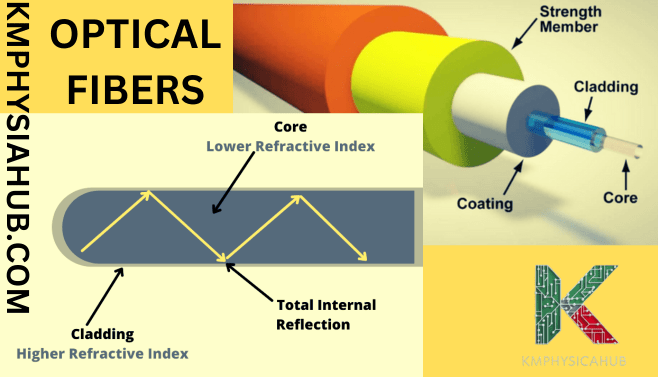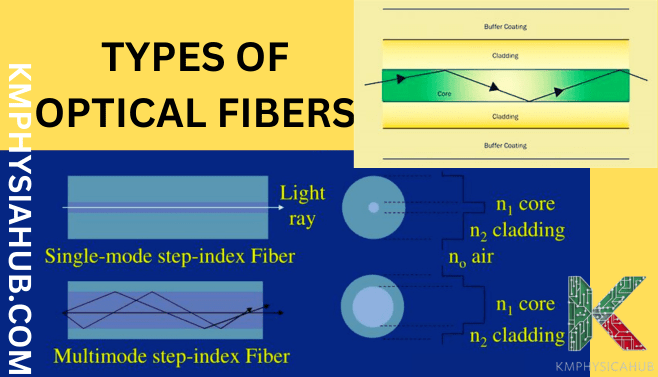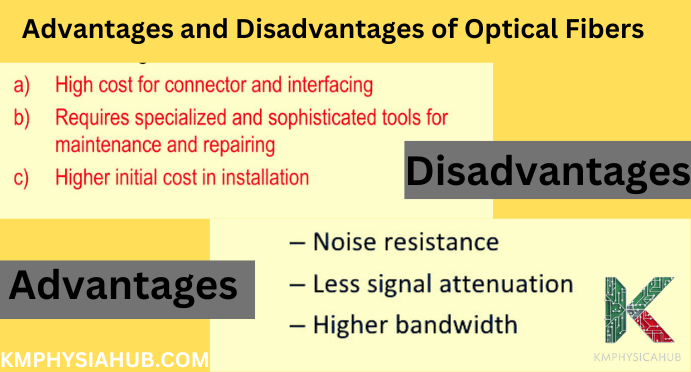How do Optical Fibers Work? The Science Behind Light Transmission
Consider a vast network of data processing where bytes of information are transmitted through long distances and where they can go from one corner of the world to the other in less than the blink of an eye for all the applications ranging from communication and business to medicine and healthcare. This is the world that is created by optical fibers; a world where the light signals transmitted through the thin strands of glass have changed the very essence of our existence.
Optical Fibers
Optical fibers are thin and flexible strings of glass or plastic which have the ability to transmit light signals. They are the veins of the modern world, transmitting the immense flow of information in the form of light signals which cover everything from the internet and telecommunication networks to the medical facilities and instruments, laser technologies etc.
History of Optical Fibers
The story of optical fibers started not in top-notch research and development facilities but with experimentation of light. Early scientists and thinkers noticed how light was able to bounce and direct through water jets and curved glass rods, underlining the potential of the wave-guided light transmission.
Early Experiments:
In the 1840s, the two scientists, Daniel Colladon and Jacques Babinet managed to show lighting through curved water streams which later paved way for discovery of total internal reflection. Tyndall later on amplified these experiments and as we have seen, fueled interest in how light behaved.
Key Breakthroughs:
To appreciate the kind of innovation that the 20th century saw, the following should be considered.
1950s: Harold Hopkins and Narinder Singh Kapany pioneered to send images through bundles of optical fibers which was a great leap towards using fiber optics.
1960s: Charles K. Kao built up a theoretical basis for practical optical fibers by his papers on his experiments on how he proposed to use ultrapure glass for light transmission over great distances.
Pioneers and Inventors:
Many great people have contributed to the development of the field of fiber optics:
Charles K. Kao:
He became popular as ‘Father of Fiber Optics’ and in recognition to his work in minimizing signal loss in glasses fibers initiated by him got the prestigious Nobel Prize in Physics in the year 2009.
Harold Hopkins and Narinder Singh Kapany:
These pioneers worked on fiber bundles and research done by them has brought tremendous change in fiber-optic imaging and communication.
Robert Maurer, Donald Keck, and Peter Schultz:
These three at Corning Glass Works produced the first low loss optical fiber for the transmission of light signals over long distance.
How Optical Fibers Work
The technology of using optical fibers is based on a fairly ordinary yet extremely effective principle known as total internal reflection.
Total Internal Reflection (TIR):
When light passing through a medium with a higher refractive index (for instance, glass) meets the interface of a medium with a lower refractive index (in this case air) at a certain angle called, the angle of incidence, it gets reflected fully back into the original medium. This is the same way that a mirror bounces or reflects light.
Structure of an Optical Fiber:
An optical fiber is made up of 3 parts. It is usually a core, cladding, and coating.
Core:
As the name indicates, the fiber core is the inner part, usually glass made from materials such as ultrapure glass or plastic through which light travels.
Cladding:
This is a substance having a refractive index lower than the core’s one and it is located path of the core. The pointer is about this, if you have materials with different refractive indexes then Total Internal Reflection will happen, that means that you will have light that can travel only from one material to another if the refractive index of the two materials is different.
Coating:
A protective layer that encases the fibers against any form of deterioration as well as keep them in contact with the medium that carries them. The typical usage of single-mode fibers is to connect data centers to other centers.

Types of Optical Fibers
Single-Mode Fiber:
These fibers are very thin at the center, lighting through them is done in a single mode, therefore, they are highly bandwidth efficient and long-distance transmission is possible. They are especially used for internet and base transmission of telecommunications.
Multi-Mode Fiber:
These because of they are a larger core can support multiple modes of light. Their bandwidth is smaller and transmission distances are shorter than those of single-mode fibers, but they are advantageous where costs are critical like the cases in LANs and data centers.

Applications of Optical Fibers
-
Telecommunications:
Phone Lines:
Telephone line usually adopts fiber optic cables as the most effective way of conveying the audio and making the connection more effective.
Data Centers:
Internet computer centers, which are the core of the internet, rely on a system of optical fibers to control and transfer huge amounts of information.
-
Medicine:
Endoscopy:
Flexible and slim endoscopes incorporated with optical fibers enable the doctors to observe the interior of the body and conduct some operations.
Laser Surgery:
It means that optical fibers transmit accurate laser rays suitable for use in surgery with limited impact on the surrounding tissues.
Medical Imaging:
Fiber optic sensors in medical imaging include optical coherence tomography (OCT) which provides clear images of tissues and organs.
-
Sensors:
Temperature Sensing:
Fiber optic sensors can be used to measure thermal conditions when the values are high or when the set surface is critical, for instance on aircraft engines, medical equipment, etc.
Strain Sensing:
These sensors measures changes in the form or strain of a structure, crucial in monitoring structures such as bridges, pipelines and aircraft wings.
Chemical Sensing:
Optical fibers are used for identification of some chemicals and gasses as well, they are widely applied in monitoring of the environment, security of the industrial areas and medical application.
-
Everyday Life Applications
Smart Cities:
Fiber optic networks form the framework of smart cities, supporting communication of structures, management of traffic and even the distribution of energy.
Autonomous Vehicles:
Autonomous cars require fast and reliable connections for route determination, data streaming from sensors, and interaction with other vehicles and roadway systems. Optical fibers are indispensable to the construction of strong communication channels necessary for autonomous vehicle implementation.
Internet of Things (IoT):
Many common use items are integrated into the Internet and require versatile and effective data transmission. Optical fibers are instrumental in creating the IoT framework to serve as a backbone for interconnecting sensors, actuators, and cloud platforms.

-
Other Applications:
Lighting and Decoration:
Optical fibers are employed in light displays, to light up signs, and as a way of producing a colorful and attractive display.
Military and Aerospace:
In military aircrafts, ships and ground vehicles communication, fiber optic cables offer secure and reliable means. They are also used for aviation electronics, navigational equipment and weaponries.
Advantages of Optical Fibers
- Higher Bandwidth and Faster Speeds:
Optical fibers can be used even more effectively than copper wires because of greater bandwidth and transport capacities for fast downloads, smooth streaming, and fast web interactions.
- Lower Signal Loss and Greater Transmission Distances:
Optical signals that are transmitted through optic cables experience far less attenuation compared to electrical signals that are sent through copper wire cables. This makes it possible to transmit information for considerably longer distances than previously practiced while using repeaters.
- Immunity to Electromagnetic Interference:
While copper wires are easily affected and interfered with by electromagnetic radiation from electricity, motors, and other electronics, optical fibers do not have this problem. This helps preserve signal and signal quality within the system and guarantee reliability especially within regions of high EMI.
- Enhanced Security and Reduced Risk of Signal Interception:
To gain access to data transmitted through an optical fiber is next to impossible and therefore deemed very safe for passing sensitive information.
Challenges and Limitations
- Cost of Installation and Infrastructure Development:
Fiber optic networks involve extensive infrastructure in terms of cabling investments, particularly where the fiber is drawn over long distances or to span a large area.
- Fragility and Potential for Damage:
However, due to their fragile nature, the functioning of the optical fibers can be compromised by bending, crushing, or even by rodent chewing. Even minor damages may involve complicated and expensive procedures.
- Signal Attenuation Over Very Long Distances:
Signal attenuation is still the issue in the optical fibers over extremely long distances but the level is lower than that of copper wires thus optical fibers even become so useful. The use of repeaters or amplifiers to enhance the strength of the signal is needed.
- Difficulties in Repair and Maintenance:
Optical fibers if damaged have to be fixed with technical equipment and professional help and may also be costly and complex as compared to traditional wiring.

Future of Optical Fibers
Emerging Trends:
Plastic Optical Fibers (POF):
POF is among the types of optical fibers which are less expensive and more flexible than glass fibers, hence it is not surprising why it’s one type suitable for short-range applications such as home networks or automotive data transmission.
Photonic Integrated Circuits (PICs):
PICs are a bunch of magical devices that can have numerous optical functions all combined on one single chip, and that’s why they can be faster, downsizing and energy saving optical devices.
Artificial Intelligence and Quantum Computing:
Artificial Intelligence:
In the aforementioned domain, optical fibers with lots of bandwidth and low latency are without doubt the solutions that come as better options to respond to AI algorithms, which demand faster training and alternatively through more efficient AI applications can be displayed.
Quantum Computing:
Optical fibers are mainly used for transferring and manipulating qubits that carry information in quantum communication and networking at different sites. As a result, this technology leads to the development of quantum computing and helps researchers overcome the looming issues.
Conclusion:
Through their widespread adoption in the telecommunications and various other sectors, optical fibers have been a major factor in making our lives, work, and communication unimaginable only a few decades ago. They are the heart of the internet by virtue of their information transmission capability that involves transferring and receiving data points at extreme speeds. Advanced technology and reached people via internet are the main prizes of the optical fiber invention. The future of optical fibers is bright despite some challenges such as cost and infrastructure development.
Thanks to research and development, we can look forward to even higher speed, greater bandwidths, and new applications to our world of physics, which is a model of technology. The path to a more connected and technologically advanced future is being showcased through this journey of light through the thin strands of glass or plastic.
People Also Ask
Q1. What are optical fibers?
A: Thin strands of glass or plastic that transmit light signals for high-speed data communication.
Q2. How do optical fibers work?
A: The light moves by reflecting through the internal surface due to the internal reflection within the inner core.
Q3. What are the types of optical fibers?
A:
- Single-mode: Small core, high speed, long distances.
- Multi-mode: Larger core, lower speed, shorter distances.
Q4. Write four benefits of optical fibers?
A:
- Faster data speeds
- Longer transmission distances
- Immunity to interference
- Enhanced security
Q5. What four drawbacks of optical fibers?
A:
- Higher installation costs
- Fragility
- Signal attenuation over very long distances
- Difficult to repair
Q6. Give five applications of optical fibers?
A:
- High-speed internet
- Telecommunications
- Medical imaging
- Laser surgery
- Sensors